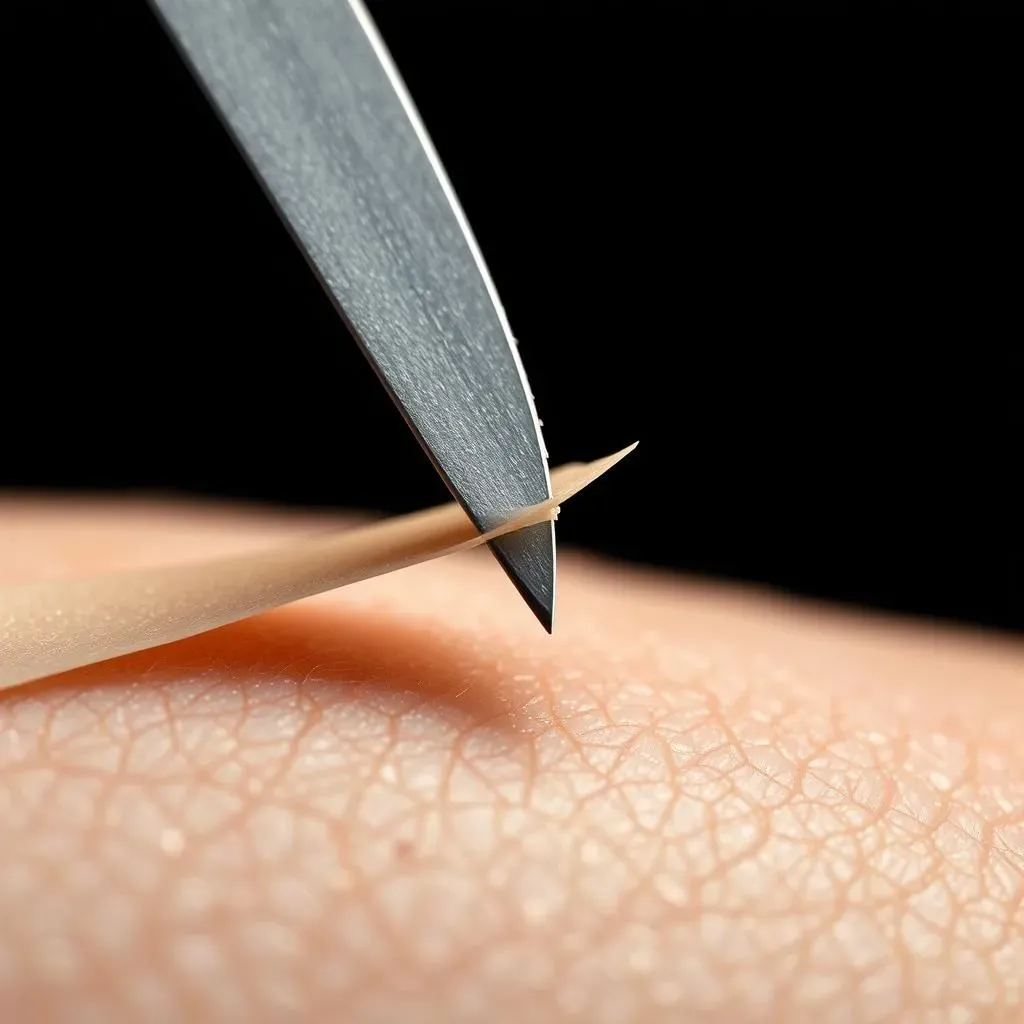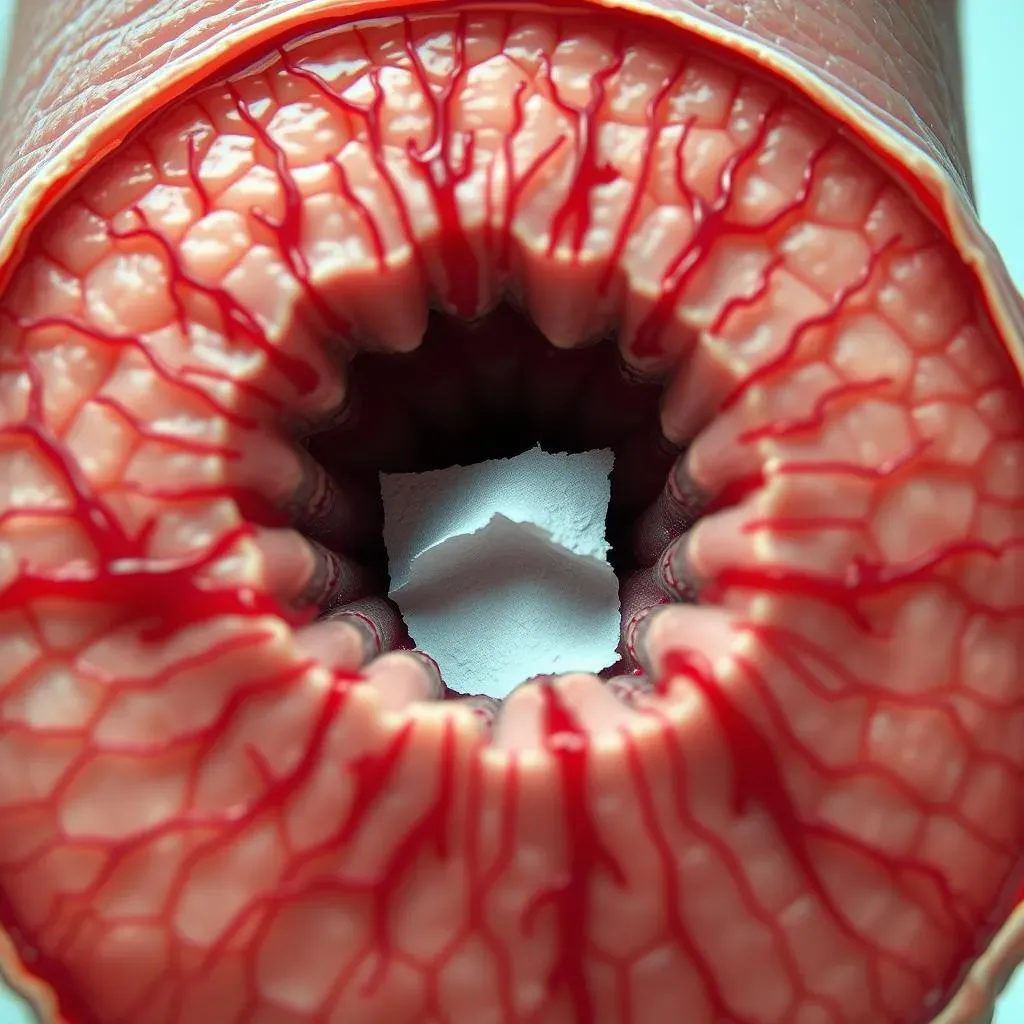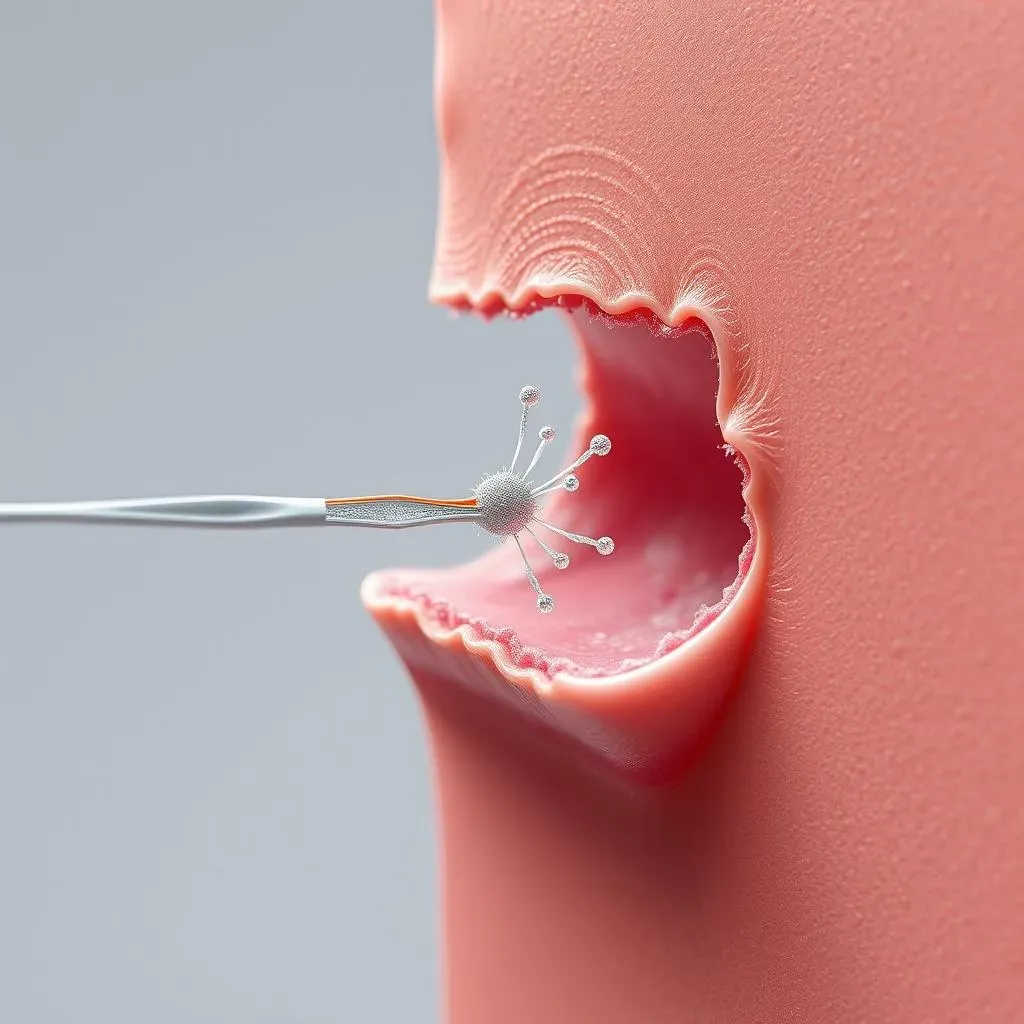Table of Contents
Have you ever wondered, "Can paper cut anything?" It seems like such a simple question, but the answer is surprisingly complex. We've all experienced the surprisingly sharp sting of a paper cut, a seemingly innocuous injury inflicted by something so thin and seemingly harmless. But is this just a minor inconvenience, or is there more to the story? This article explores the surprising science behind paper cuts and the limits of paper's cutting power. We'll delve into the physics of how paper manages to slice through skin, explaining why these seemingly minor wounds can be surprisingly painful. We'll examine the microscopic properties of paper that contribute to its cutting ability, discussing factors like edge sharpness and the role of microscopic particles. Then, we'll move beyond the human finger and explore the question: can paper cut *anything*? We'll look at experiments and examples to see what materials paper can – and can't – cut through. Get ready to challenge your assumptions about this everyday material. Prepare to be amazed by the hidden power of paper. Let's discover together just how much "can paper cut anything" truly means.
Can Paper Cut Anything? Debunking the Myth
Can Paper Cut Anything? Debunking the Myth
The Paper Cut Paradox
Let's start with the most common misconception: that paper is inherently *soft*. While it bends easily, its ability to cut stems from a combination of factors. Think of it like this: a flimsy piece of paper can't cut a thick piece of wood, but a very sharp, thin piece of paper, moving quickly, can cut your skin. The sharpness of a paper's edge isn't about a single, smooth blade. Instead, it's more like a tiny saw with microscopic teeth. These microscopic imperfections, combined with the speed and pressure of the cut, are what cause the damage. A simple push against your skin won't do much, but a quick swipe can be surprisingly effective.
Many people underestimate the power of a thin, sharp edge moving quickly. It's a bit like a tiny saw. The tiny jagged edges of a piece of paper, when moved across your skin, create a sawing action that's surprisingly effective at cutting. It's not the overall softness of the paper that matters, but the sharpness and motion of its edge. This is why you're more likely to get a paper cut from a freshly cut sheet of paper than from one that's been folded and handled multiple times. The more folded and handled the paper is, the less sharp its edges become.
Beyond the Surface: Microscopic Mayhem
The microscopic structure of paper plays a huge role. Paper isn’t a uniform, smooth surface. It's made of interwoven fibers, and those fibers can create tiny, almost invisible, jagged edges. These edges are the key to paper's surprising cutting ability. They act like miniature saws, tearing through the skin rather than cleanly slicing it. Think of it like trying to saw wood with a dull blade versus a sharp one. A dull blade will crush the wood, while a sharp blade will cut cleanly. The tiny, jagged edges of paper act like a sharp saw, creating a tearing action that causes the cut.
Furthermore, the type of paper matters. Thicker papers, like cardstock, are less likely to cut you because their fibers are more tightly bound, and the edges are less likely to be jagged. However, thinner papers, like printer paper, are more prone to cutting because their edges are more likely to be jagged and their fibers are less tightly bound. This is why you're more likely to get a paper cut from a thin piece of paper than from a thick piece of paper. Check out this article on different types of paper cutting for more information.
Paper Type | Cutting Ability | Reason |
|---|---|---|
Thin Printer Paper | High | Jagged edges, loosely bound fibers |
Thick Cardstock | Low | Smooth edges, tightly bound fibers |
The Role of Pressure and Movement
It's not just about the paper itself; pressure and movement are also crucial. A simple, gentle press against a piece of paper won't cut you. However, if you drag the paper along your skin, the microscopic saw-like edges create a tearing action. This is why paper cuts often happen when you're accidentally scraping a piece of paper across your finger. The combination of pressure and movement is what causes the damage.
Think of a knife. You can press a dull knife against your skin all day long, and it won't cut you. However, if you move the knife across your skin, it will cut you. Paper works in a similar way. The combination of pressure and movement is what enables the microscopic edges of the paper to tear through your skin. For a deeper dive into the pain aspect, read our article on are paper cuts painful.
- Sharp edges
- Pressure
- Movement (the sawing effect)
The Science Behind Paper Cuts: Why They Hurt
The Science Behind Paper Cuts: Why They Hurt
The Science Behind Paper Cuts: Why They Hurt
So, why do these tiny cuts hurt so much? It's not just the damage to the skin; it's also about the nerves. Our fingertips are packed with nerve endings, making them incredibly sensitive. A paper cut, while seemingly small, often affects many of these nerve endings. It's like poking a whole bunch of tiny, super-sensitive spots all at once—ouch!
The way paper cuts are made also plays a part. The jagged edges don't cleanly slice the skin. Instead, they create a rough, uneven wound, which irritates the nerve endings even more. Imagine a clean cut versus a tear; the tear hurts more. Check out this article on paper cut pain for more details.
- High concentration of nerve endings in fingertips
- Jagged edges create uneven wounds
- Irritation of nerve endings
"The pain from a paper cut is disproportionate to the size of the wound because of the high concentration of nerve endings in the fingers and the way the paper tears the skin," explains Dr. Emily Carter, a dermatologist. "It's not just the cut itself; it's the irritation and inflammation that follows."
Another factor contributing to the intense pain is the exposure of nerve endings to the environment. The wound is often shallow but wide, leaving the nerve endings exposed to air and potential contaminants. This exposure triggers a cascade of inflammatory responses, further amplifying pain sensations. For more on preventing infections, read our guide on dangerous paper cuts.
Finally, bleeding plays a role. While a paper cut might seem minor, the capillaries in your fingers are very close to the surface. This means even a small cut can lead to significant bleeding, which can itself be irritating and painful. The bleeding keeps the wound moist and promotes inflammation, making the pain even worse. Learn about treating paper cuts by reading our article on real paper cuts.
Factor | Effect on Pain |
|---|---|
Nerve Endings | High concentration in fingertips amplifies pain |
Wound Shape | Jagged edges cause more irritation |
Bleeding | Irritation and inflammation |
Can Paper Cut Anything? Experiments and Examples
Can Paper Cut Anything? Experiments and Examples
Everyday Experiments
Let's get experimental! We already know paper can cut skin. But what else? Grab some different types of paper – printer paper, cardstock, even some cardboard. Try gently scraping each type across a ripe tomato, a soft piece of cheese, or even a banana. You'll notice differences in how easily each paper type cuts these soft materials. Thinner papers, with their more jagged edges, will likely perform better. This demonstrates how the sharpness of the edge, a function of the paper's structure and how recently it was cut, directly impacts its cutting ability. The experiment also highlights that the material being cut is a significant factor; paper can't cut through everything.
Next, let's ramp up the challenge. Many videos online show people using rapidly spinning disks of paper to cut through surprisingly sturdy materials like wood and even softer metals. This isn't about the paper's inherent strength but rather the incredible force generated by the spinning motion. The centrifugal force stiffens the paper, transforming it into a surprisingly effective cutting tool. This isn't something you should try at home, though! For safer paper-cutting crafts, check out our guide on easy paper cutting projects.
Material | Printer Paper | Cardstock | Cardboard |
|---|---|---|---|
Tomato | Cuts easily | Cuts less easily | Doesn't cut |
Cheese | Cuts easily | Cuts less easily | Doesn't cut |
Banana | Cuts easily | Cuts less easily | Doesn't cut |
Beyond Soft Materials
While paper excels at cutting soft materials, its ability to cut harder substances is limited. You won't be slicing through steel with a sheet of printer paper anytime soon! The microscopic “teeth” of the paper's edge simply lack the strength and hardness to penetrate materials like wood or metal. The force required to make a cut would cause the paper to crumple and deform long before it could effectively cut through the material. However, under specific conditions (like the spinning disk example), the force applied can overcome this limitation. For more on the tools used in paper cutting, check out our article on paper cutting tools.
The key takeaway here is that the "can paper cut anything" question doesn't have a simple yes or no answer. It's about the interplay of several factors: the paper's sharpness (and the microscopic structure that determines it), the hardness of the material being cut, and the force applied. While paper can indeed cut surprisingly well under certain circumstances, it's not a universal cutting tool. Its effectiveness is highly context-dependent. Learn more about the intricacies of paper cutting techniques by reading our guide on paper cutting techniques.
- Paper cuts soft materials effectively due to microscopic jagged edges.
- High force can overcome limitations for harder materials.
- Effectiveness depends on paper type, material, and force applied.
